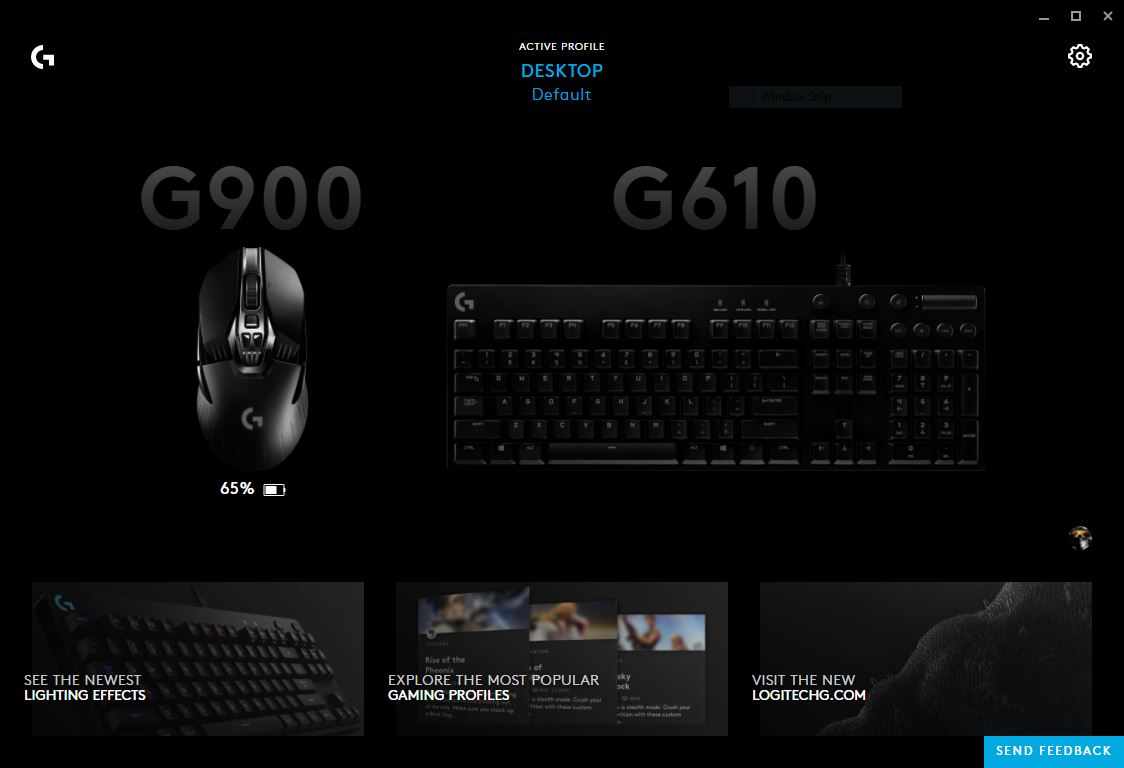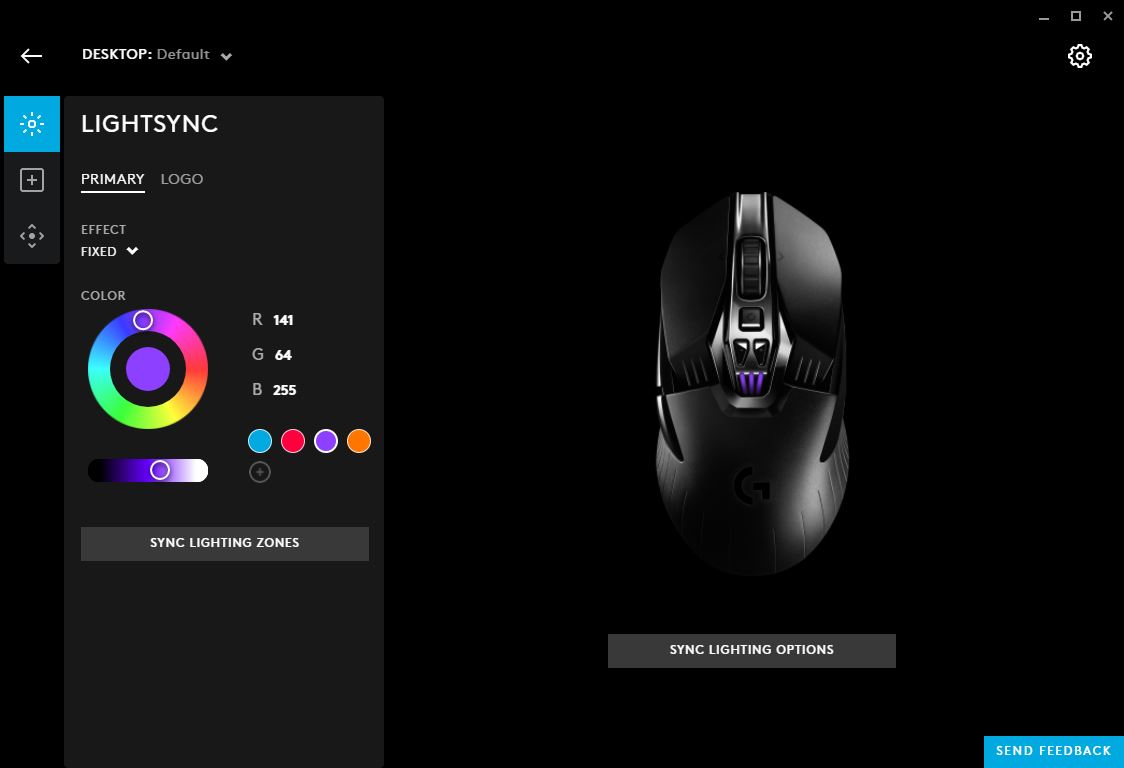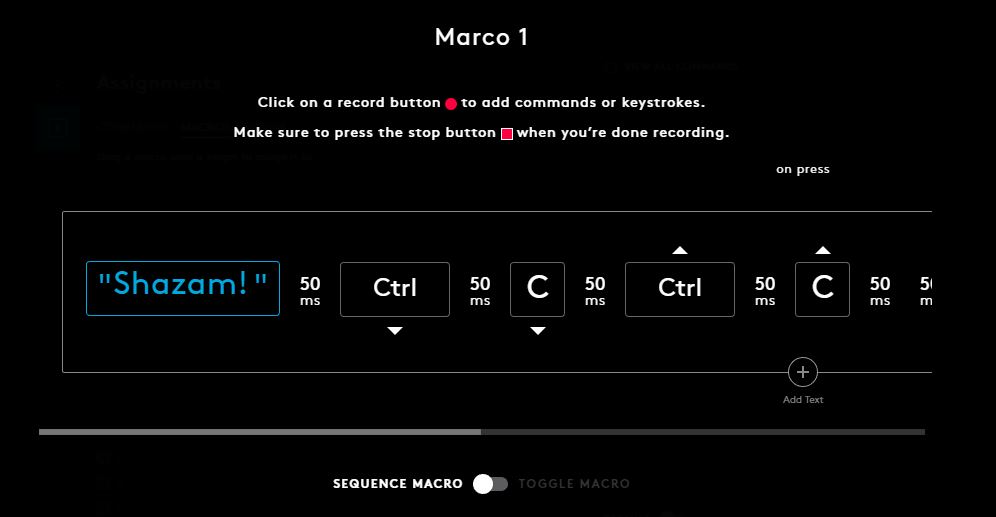Logitech replaces its old gaming software with the snazzy new G Hub
It's faster, lighter, and much nicer to look at.

After years of loyal service, Logitech Gaming is retiring its old driver software suite and replacing it with a new hub launching into beta today—called the Logitech G Hub—that doesn't look like a holdover of the Windows Vista era. The best thing about Logitech's new Hub software, other than the fact that it's fast, clear, and easy to use, is that it doesn't force you to create a profile and hand over your email just to use it. It's a pointed difference from Razer's Synapse and Nvidia's GeForce Experience, and I'm very happy I can download and use G Hub without having to remember another damn password or connect my Facebook account.
I'm ragging on Logitech's old gaming software with affection; it was never particularly pretty, but it was always reliable and simple, two traits I really care about in the software I use to customize the lighting, DPI, etc. of my mouse and keyboard. Other companies like Corsair and Roccat have released feature-packed driver utilities over the years that were often harder to use, though they too have gotten better. G Hub feels very much like a 2018 piece of software, with a resizable window (something, crazily enough, the old program didn't have), a flat aesthetic with lots of negative space and plain text instead of cluttered iconography.

It's really fast to navigate between functions for my Logitech devices, which include the G900 wireless mouse and G610 mechanical keyboard. Each have the same two main tabs, lighting and assignments, which let you customize lighting colors and patterns, and set mouse bindings or keyboard Function button commands. You can also create macros with a really powerful tool I've only dabbled with. I've never had much need for macro functionality, but here you can record your mouse or keyboard presses, drag-and-drop elements around, change the delay between actions, and even throw some text into the mix.
The G900's third tab is dedicated to DPI sensitivity adjustment, while the G610's lets you customize its Game Mode, an option that disables certain keys (like the Windows key) to avoid accidental presses while gaming.
The layout of these tabs is easy to use and to understand, even if you're not one to typically mess with macros or custom mouse bindings. The only thing I find a bit odd is that each device also has an extra settings page, which isn't exactly hidden but is a layer down behind a cog icon in the top-right corner. This is an important page for the G900, since it lets you customize the button layout of the mouse (it has removable thumb buttons for left- or right-handed users), apply surface tuning for better tracking on different mousepads, and save your settings to an on-board memory profile. I'm not sure why those functions aren't given more prominent tabs within the Hub.

By ditching its old software for a clean slate, Logitech was able to make G Hub a lot more flexible. Depending on what hardware you have, G Hub will download the appropriate modules to let you customize them. As with other similar driver packages, you can also set custom profiles—lighting, key assignments, the works—for various games. It's an easy feature to ignore if you don't want it, but the presentation is much nicer than it was with Logitech's old software.
The last big feature, and Logitech's attempt to build some community around its gaming brand, is the ability to download profiles and lighting effects from other users. The catch: to use this feature (either download or upload), you do need to create a profile and register with your email. I feel like I should be able to download a lighting profile without being signed in, but fair enough for uploads. Either way, it's a cool feature that's still a bit barebones, and we'll likely see it grow as G Hub spends some time in beta.
Keep up to date with the most important stories and the best deals, as picked by the PC Gamer team.

For example, lighting profiles show a really cool animated preview of the RGBs in action before you download, but don't list the name of the keyboard they were designed with. Theoretically they should work across keyboards—unless you have a G610 like me, which only has white LEDs, not RGBs. So when I clicked "download" and then "Apply now" to apply a profile, nothing happened. And there's no feedback that tells you why the profile doesn't work. Making compatibility really clear is going to be important for this community sharing feature to work, and it's not there yet.
G Hub is available to download in beta today, and so far has been totally stable and easy to adapt to, for me. No crashes, no real hang-ups in learning the new interface. It also offers a really handy import option to bring all your existing Logitech profile settings right into the new software. From what I've seen, there's no reason to stick with the old; G Hub is a straight upgrade for anyone with any Logitech gaming gear.

Wes has been covering games and hardware for more than 10 years, first at tech sites like The Wirecutter and Tested before joining the PC Gamer team in 2014. Wes plays a little bit of everything, but he'll always jump at the chance to cover emulation and Japanese games.
When he's not obsessively optimizing and re-optimizing a tangle of conveyor belts in Satisfactory (it's really becoming a problem), he's probably playing a 20-year-old Final Fantasy or some opaque ASCII roguelike. With a focus on writing and editing features, he seeks out personal stories and in-depth histories from the corners of PC gaming and its niche communities. 50% pizza by volume (deep dish, to be specific).

